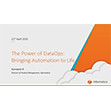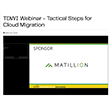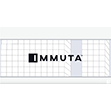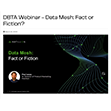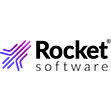

In today’s data-driven world, organizations are constantly seeking innovative solutions to extract maximum value from their data stack. However, with the rise of AI, organizations are dealing with increasingly complex data structures and models. This has made it more challenging for them to have a unified and accessible data stack that engages both technical and non-technical stakeholders.
Semantic layers help simplify the complexity by providing a foundational framework for a consistent way of interpreting and analyzing data. With semantic layers, self-service users can find and share data without needing to know how to code.
AtScale, one of the leading providers of semantic layer solutions, unveiled next-generation product innovations aimed at advancing the capabilities of its platform and ushering the industry into a new era of data-driven innovations.
 The product’s innovations were announced at the Semantic Layer Summit – a one-day virtual event that features enterprise data leaders & top industry technologists.
The product’s innovations were announced at the Semantic Layer Summit – a one-day virtual event that features enterprise data leaders & top industry technologists.
AtScale’s next-gen platform now features a Universal Semantic Hub that supports all AI and business intelligence (BI) tools. This enables teams to work with their preferred data products while having access to consistent views of live cloud data. This will help break down data silos, minimize data duplication, and increase accessibility to business-ready data.
The update also features improved collaboration capabilities with better discoverability, oversight, and reusability of semantic objects. This upgrade enables more efficient collaboration between business stakeholders. This means that business analysts, data engineers, and other stakeholders can now collaborate on semantic modeling under a unified platform.
“The semantic layer serves as a key technology enabler for delivering the best of both worlds; business-friendly, self-service analytics, but with governance and control. By supporting traditional BI teams alongside a new generation of analytics users, our ‘plug and build’ approach accelerates data-driven innovations in a unique way.” said Dave Mariani, founder and CTO, AtScale.
AtScale has also launched a free public preview version of its semantic layer platform called the Developer Community Edition, signaling a major leap in democratizing analytics. The Developer Community Edition is a free version of AtScale’s full-featured semantic layer platform and features a new modeling language called semantic modeling language (SML).
The new release also features a public GitHub repository for pre-built and reusable semantic models, allowing community members to learn, share, and innovate together. The pre-built model libraries can be used for various applications including operational efficiency in finance, advanced analytics transitions, and insights enhancement for retail organizations.
Data that is enriched with business context is significantly more valuable to an organization. The latest version of the platform features a metadata hub to simplify the process of integrating any model or approach with GenAI and LLMs within the appropriate business context.
This allows companies to give business context to both traditional AI as well as GenAI models. They can use the metadata hub to enrich their labeling and vectorization of unstructured data objects.
AtScale now offers seamless integration with dbt by adding its SML translator for dbt. Teams can use dbt semantic models to work with AtScale’s support for Excel, Tableau, Power BI, and other consumption tools. We can expect AtScale to add more integrations to its platforms, including integration with vector databases and other elements of the GenAI ecosystem.
The announcement of new product innovations and the public preview of the AtScale Developer Community Edition are an indicator of AtScale’s commitment to helping organizations create value from their data and AI investments, and to making analytics benefits accessible to all.
Related Items
AtScale Releases Keynote Lineup, Full Agenda and Registration for 2024 Semantic Layer Summit
August 15, 2025
- SETI Institute Awards Davie Postdoctoral Fellowship for AI/ML-Driven Exoplanet Discovery
- Los Alamos Sensor Data Sheds Light on Powerful Lightning Within Clouds
- Anaconda Report Reveals Need for Stronger Governance is Slowing AI Adoption
August 14, 2025
- EDB Accelerates Enterprise AI Adoption with NVIDIA
- Oracle to Offer Google Cloud’s Gemini AI Models Through OCI Generative AI
- Grafana Labs Launches Public Preview of AI Assistant for Observability and Monitoring
- Striim Launches 5.2 with New AI Agents for Real-Time Predictive Analytics and Vector Embedding
- G42 Launches OpenAI GPT-OSS Globally on Core42’s AI Cloud
- SuperOps Launches Agentic AI Marketplace Partnering with AWS
- MinIO Launches MinIO Academy as AI Adoption Drives Demand for Object Storage Expertise
- DataBank Reports 60% of Enterprises Already Seeing AI ROI or Expect to Within 12 Months
- SnapLogic Surpasses $100M ARR as Founder Gaurav Dhillon Retires
August 13, 2025
- KIOXIA Advances AI Server Infrastructure Scalability, Accelerating Storage Performance and Density
- Qubrid AI Debuts 2-Step No-Code Platform to Chat Directly with Proprietary Data
- Redpanda Provides Kafka-Compatible Streaming for NYSE Cloud Services
- Treasure Data Introduces ‘No Compute’ Pricing, Delivering Predictable Economics with Hybrid CDP Architecture
- Couchbase: New Enterprise Analytics Brings Next-Gen JSON Analytics to Self-Managed Deployments
- Aerospike’s New Expression Indexes Simplify Developer Code and Reduce Memory Overhead for Application and AI Queries
- Progress Software Releases MarkLogic Server 12 and Highlights Results with Semantic RAG
- ScienceLogic Rolls Out Powerful AI and Automation Updates for Proactive IT Mastery
- Top 10 Big Data Technologies to Watch in the Second Half of 2025
- Rethinking Risk: The Role of Selective Retrieval in Data Lake Strategies
- LinkedIn Introduces Northguard, Its Replacement for Kafka
- Apache Sedona: Putting the ‘Where’ In Big Data
- What Are Reasoning Models and Why You Should Care
- Scaling the Knowledge Graph Behind Wikipedia
- Why Metadata Is the New Interface Between IT and AI
- Why OpenAI’s New Open Weight Models Are a Big Deal
- LakeFS Nabs $20M to Build ‘Git for Big Data’
- Doing More With Your Existing Kafka
- More Features…
- Mathematica Helps Crack Zodiac Killer’s Code
- Promethium Wants to Make Self Service Data Work at AI Scale
- BigDATAwire Exclusive Interview: DataPelago CEO on Launching the Spark Accelerator
- The Top Five Data Labeling Firms According to Everest Group
- McKinsey Dishes the Goods on Latest Tech Trends
- Supabase’s $200M Raise Signals Big Ambitions
- Solidigm Celebrates World’s Largest SSD with ‘122 Day’
- AI Skills Are in High Demand, But AI Education Is Not Keeping Up
- Google Pushes AI Agents Into Everyday Data Tasks
- Collate Focuses on Metadata Readiness with $10M Series A Funding
- More News In Brief…
- Seagate Unveils IronWolf Pro 24TB Hard Drive for SMBs and Enterprises
- OpenText Launches Cloud Editions 25.3 with AI, Cloud, and Cybersecurity Enhancements
- Gartner Predicts 40% of Generative AI Solutions Will Be Multimodal By 2027
- StarTree Adds Real-Time Iceberg Support for AI and Customer Apps
- Gathr.ai Unveils Data Warehouse Intelligence
- Deloitte Survey Finds AI Use and Tech Investments Top Priorities for Private Companies in 2024
- LF AI & Data Foundation Hosts Vortex Project to Power High Performance Data Access for AI and Analytics
- Dell Unveils Updates to Dell AI Data Platform
- Zscaler Unveils Business Insights with Advanced Analytics for Smarter SaaS Spend and Resource Allocation
- Collibra Acquires Deasy Labs to Extend Unified Governance Platform to Unstructured Data
- More This Just In…

















